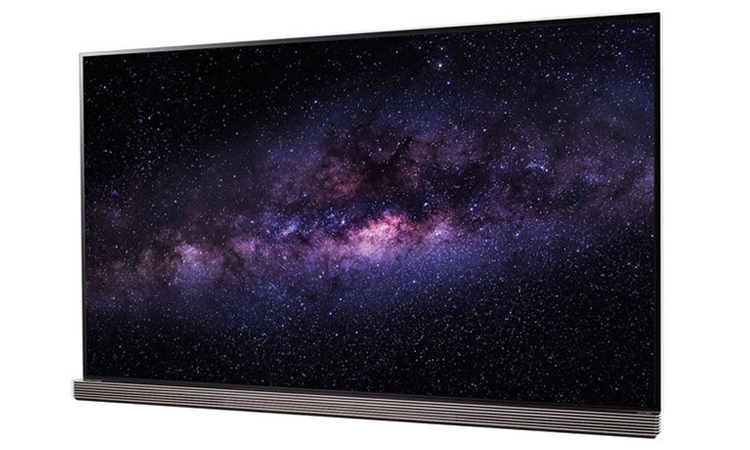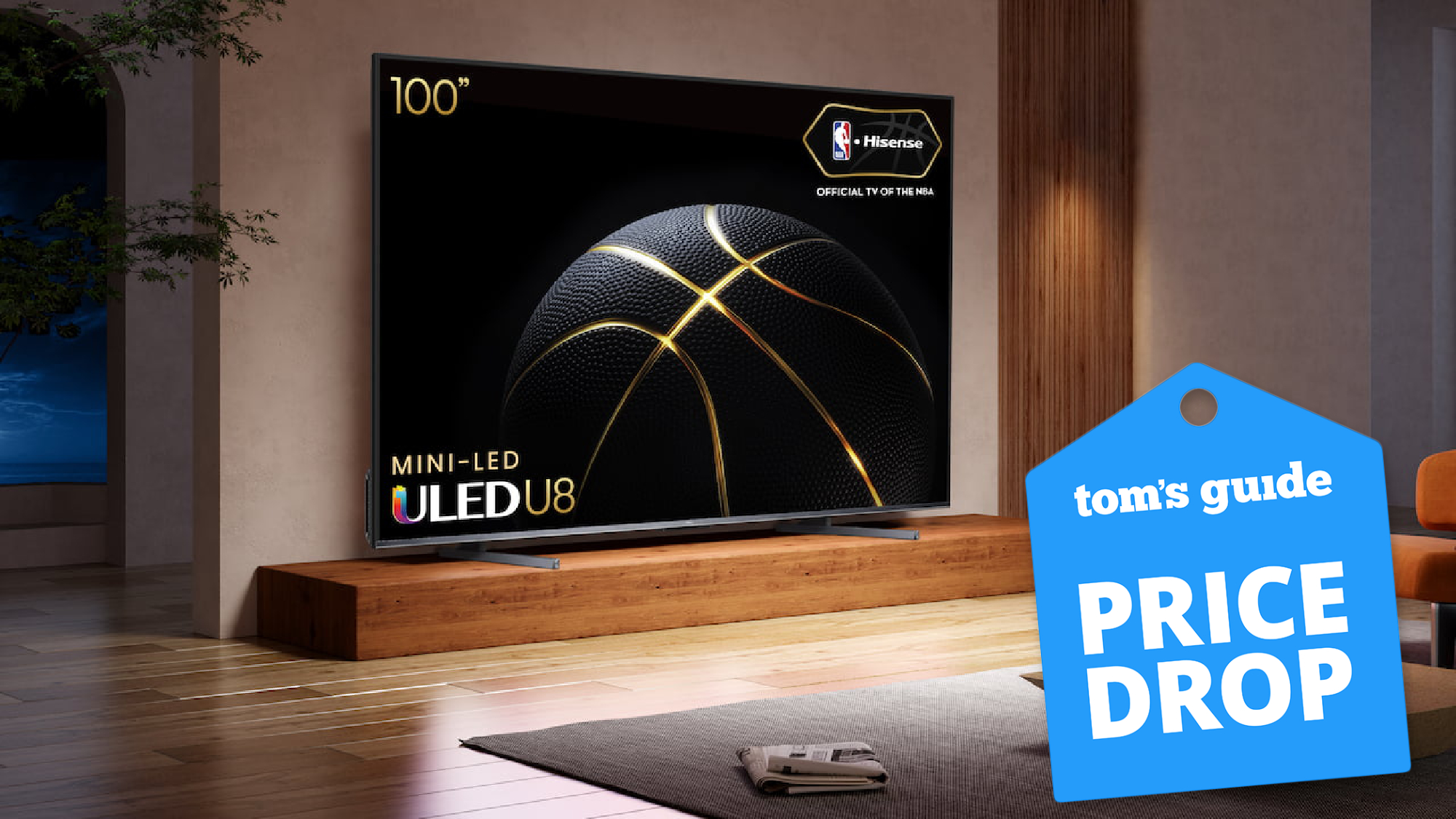Tom's Guide Verdict
The LG Signature G6 OLED 4K TV delivers outstanding image quality and supports HDR for better colors in a stunning razor-thin panel.
Pros
- +
Exceptional picture clarity
- +
Stunningly thin design
- +
Excellent off-center viewing
- +
Strong audio quality
Cons
- -
Motion artifacts in upscaled content
- -
Stratospheric price tag
Why you can trust Tom's Guide
When you have the best TV around, what do you do for an encore? If you’re LG, you upgrade your class-leading 4K OLED set to support HDR, which results in brighter and even more colorful images. The 65-inch LG Signature G6 OLED (OLED65G6P) supports both the Ultra HD Premium and Dolby Vision HDR formats and wraps it all up in a razor-thin design — for a cool $8,000.
The G6 deservedly elicits superlatives, and the unique design includes a stand that doubles as a soundbar. But our tests revealed a few performance hiccups.
Editors’ Note: Due to high customer demand for the G6 Signature, LG did not ship the TV to publications for review. Instead, we brought our own testing equipment to a separate venue.
OLED Meets HDR
OLED (organic light-emitting diode) displays can light up individual pixels. Conventional LCD sets use LED lights behind the screen or along the edge to illuminate the picture, which means that some light leaks into other pixels, and LCDs cannot produce inky-black areas in a picture. Conversely, the LG G6 can recreate dark scenes and blistering pyrotechnics with a crispness that LCDs simply cannot match.
HDR further improves the depth and realism of 4K Ultra HD pictures (3,840 x 2,160 pixels) by broadening the color spectrum and the brightness or intensity of individual colors. At the moment, there are several competing HDR formats: Ultra HD Premium (supported by an alliance of dozens of companies), Dolby Vision (a more demanding specification), and HDR or HDR10, a generic specification you'll see touted by other manufacturers. To allay incompatibility problems and fears of future obsolescence, LG is supporting all of the HDR formats.
The G6 illuminated details and provided a depth of color that exceeds anything we've tested.
To appreciate the HDR difference — which can be striking — you also need compatible HDR 4K video, which is just now trickling out on streaming services such as Vudu and Amazon Prime Video. However, just as 4K TVs will upscale HD video to the higher-resolution format, LG's G6 can also be set to boost the colors of conventional HD programs — with some mixed results.
MORE: Our Favorite Televisions From 32 Inches and Up
Get instant access to breaking news, the hottest reviews, great deals and helpful tips.
To help us test the new model, LG offered a prerelease, daylong look at the G6 Signature. During that time we were able to run tests on the set and conduct some private viewing, using our own equipment and materials.
Design: Futuristic and Svelte
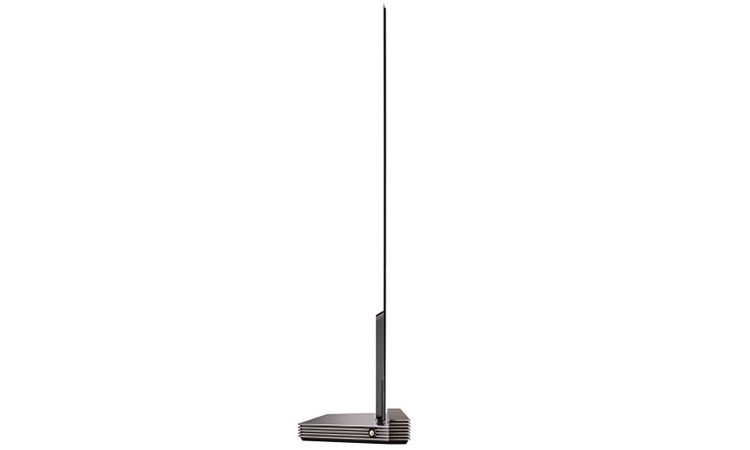
LG calls the G6 design “picture on glass” because the engineers have moved all the electronics and video-processing hardware into the base of the set. It means that the panel itself is razor-thin — about one-tenth of an inch thick — so that it nearly melts into the background. It also means better audio, thanks to fact that the 12.5-inch-deep stand doubles as a sound bar.
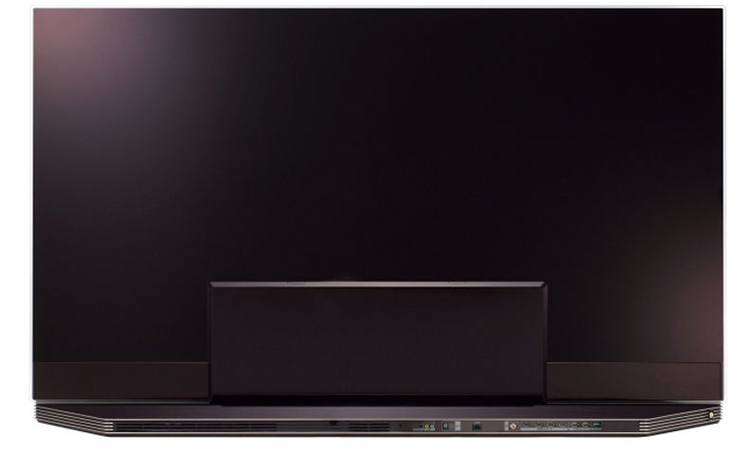
Connections on the LG OLED65G6P include four HDMI ports that are compatible with the latest 4K formats and copy-protection schemes. There are also three USB ports, a coaxial connection, a combination component/composite video input, Ethernet port and optical audio jack. The LG G6 also supports 802.11 a/c, which is the latest and quickest Wi-Fi standard.
Performance
For its top-of-the-line set, LG is using a new phosphor formulation to help boost peak brightness, improve color accuracy and increase longevity (LG rates the set for 30,000 hours of viewing until it hits half brightness). I found that the G6 was as good as or better than previous-generation OLEDs from LG, especially in terms of brightness. (OLEDs don't achieve the same peak brightness levels as the best LCD sets, but because their relative contrast levels are so much better than LCD models, the difference is only important in the brightest of viewing conditions.) The one catch: The set had some issues in upscaling HD movies, which will constitute the vast majority of material available to viewers for some time to come.
MORE: Our Favorite 4K (Ultra HD) TVs Available Now
Overall, the G6’s picture was laudable. Color and shading were extremely faithful, with a slight tilt toward the cooler blue end of the spectrum, which our test results in Cinema mode confirmed. Contrast was impressive: Subtle colors and shades were revealed in shadows, which other TVs cannot reproduce. Off-axis viewing — where LCDs tend to wash out — was also excellent, with rich colors and uniform brightness.
In presenting HDR 4K material, the LG G6 illuminated details and a depth of color that exceeded anything we've seen yet. In a 4K HDR music video, for example, I could clearly see faces in the darkened audience and more color in the skin tones than on any other set, including Sony's Bravia X930C.
Watching the 4K version of The Amazing Spider-Man 2 demonstrated how well LG's OLED can reveal details in the shadows and yet handle bright splashes of light without creating banding between color variations. When I tried out the LG G6's HDR Effect mode, I was able to select low, medium or high degrees of color and brightness upscaling. The “high” setting increases the saturation of all the colors, particularly blue and red, while the “low” mode brightened up highlights; “medium” fell somewhere in between. All of the modes generated a somewhat artificial cast, however; the LG G6 still looked best when I left the set in the non-HDR Effect Cinema mode.
The stand acts as a built-in Harman Kardon soundbar, which delivers better audio than most of the competition.
The few performance glitches I found with the LG G6 occurred when I upscaled some quick-motion scenes from Blu-ray-based content. In Gravity, star fields were stunningly detailed, with deep blacks and pinpoint stars. The set could also render bright objects, like an astronaut's space suit, against a dark sky without any halos or other light leakage. Unfortunately, the G6 blurred the stars in the background of some scenes and made them flicker and jump in others when trying to interpolate images in motion sequences. With rapid camera movements in action sequences, such as the marketplace portion of the opening chase scene in Skyfall, some objects like extras in the crowd would momentarily flicker out of view.
Audio
For sonic support, the G6's stand acts as a built-in soundbar with Harmon Kardon branding. In general, it's much better than the usual attempts at audio that come from the backsides of other TVs. There's plenty of volume to fill a large living room with music or mayhem. There are several optimized, preset audio modes ranging from “music” to “sports” to “cinema.”
MORE: Our Favorite Soundbars for Small and Big TVs
In the music setting, songs are more focused toward the center of the screen with reasonable midrange coverage; cinema mode is more expansive and dynamic, with more emphasis on the higher registers. Overall, while you won't get the resonating bass of a subwoofer, this set produces much better and more pleasing midrange notes than others.
Interface: Next-Gen webOS
LG continues to upgrade its smart TV software with webOS 3.0. LG says it's snappier and more responsive than version 2.0, which seemed to be the case in our brief time with it. In addition, webOS 3.0 includes some new additions to the colorful angled tabs that adorn the bottom of the screen.
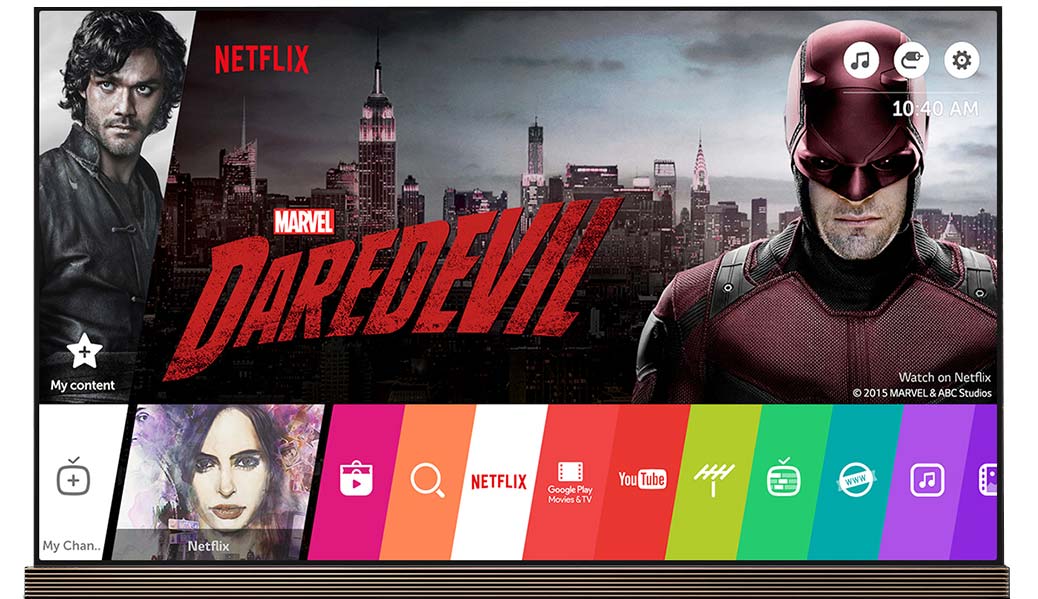
There's a “magic zoom” option, for example, that allows the viewer to zoom in on an area of the screen, so you can replay controversial calls (It was a strike!) or news footage (He did grab her!). LG has also added its own feature for sharing smartphone apps on the big screen. It operates like Google's Chromecast, so it's limited to specific applications.
Should the variety of choice become overwhelming, you can collect your favorites under a new My Content tab that you can add to by using a plus button.

LG has also updated the “magic” remote control. It has grown into a larger, wand-style controller, but it still behaves like a wireless mouse that manipulates the on-screen cursor. LG added an input button to the magic remote, but left out the four-way directional pad with the center thumb wheel. Also new are DVR controls for more easily controlling the playback of recordings.
Bottom Line
In addition to this 65-inch G6 OLED set, LG plans to release a 75-inch version later this year — for $25,000. By comparison, the 65-inch LG G6 seems like an $8,000 bargain. It offers one of the best pictures available yet, and it covers all the HDR bases by offering compatibility with all the current formats — and forthcoming content.
MORE: The Best Streaming Video Services for Cord Cutters
Unfortunately, we experienced some issues when we attempted to upscale content. But based on our testing, the LG G6 is a stunning design statement with a picture to match.
John R. Quain has been reviewing and testing video and audio equipment for more than 20 years. For Tom's Guide, he has reviewed televisions, HDTV antennas, electric bikes, electric cars, as well as other outdoor equipment. He is currently a contributor to The New York Times and the CBS News television program.
